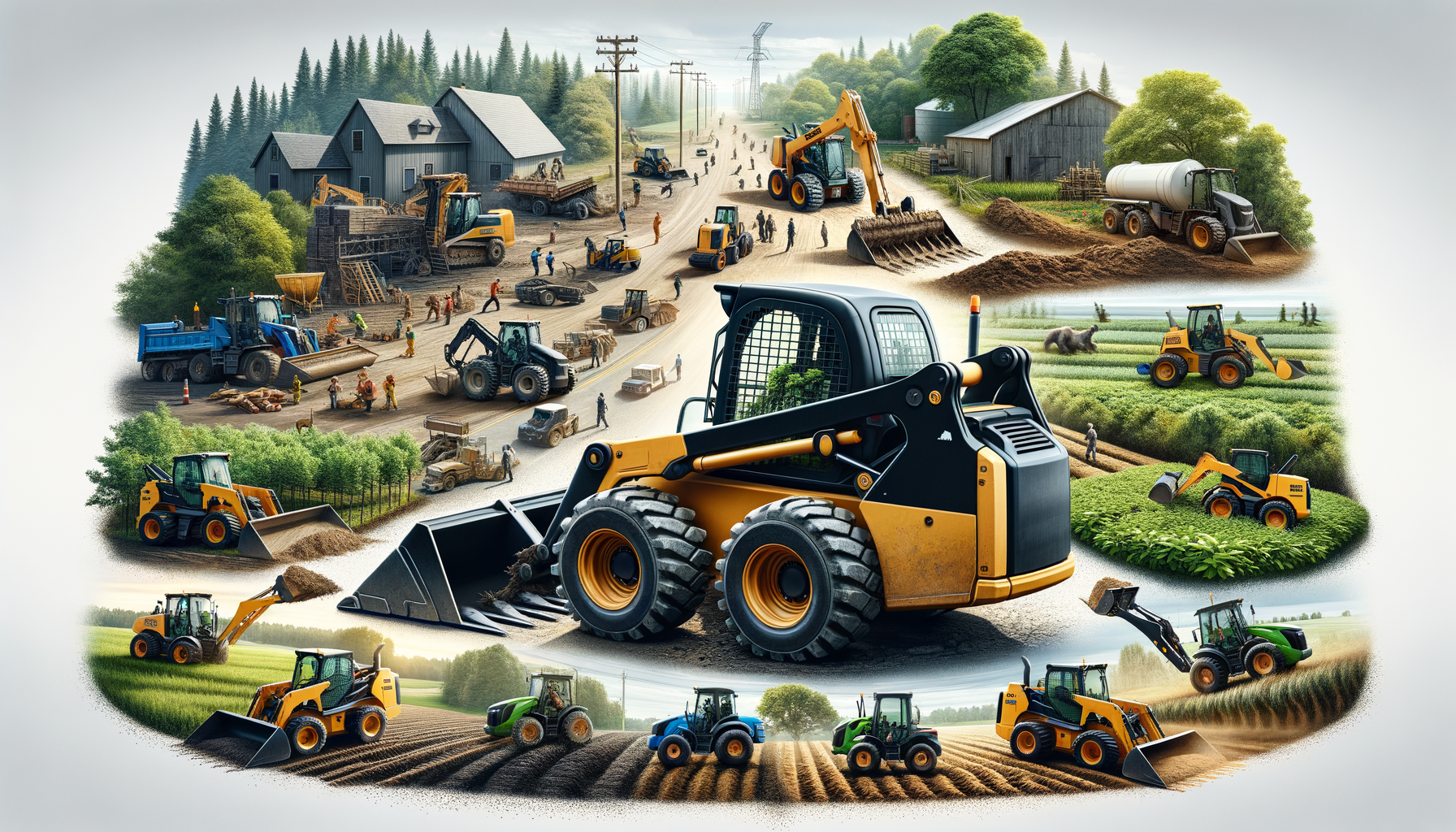
Skid Steer Loaders: An In-Depth Look at Their Many Uses
The Evolution of Skid Steer Loaders
Skid steer loaders have come a long way since their inception in the late 1950s. Originally designed to help farmers clean out barns, these versatile machines have evolved into indispensable tools across various industries. The evolution of skid steer loaders is marked by significant advancements in technology, design, and functionality. Today, they are equipped with powerful engines, advanced hydraulic systems, and a wide range of attachments, making them suitable for tasks beyond their original agricultural purpose.
Over the years, manufacturers have focused on enhancing the efficiency and versatility of skid steer loaders. One of the key developments has been the integration of electronic control systems, which have improved precision and ease of operation. Additionally, the introduction of compact models has allowed for greater maneuverability in tight spaces, further expanding their utility in urban construction and landscaping projects.
The adaptability of skid steer loaders is also evident in their ability to accommodate a variety of attachments. From augers and backhoes to snow blowers and trenchers, these machines can be customized to meet the specific needs of different tasks. This flexibility has made them a popular choice in industries such as construction, agriculture, and landscaping.
Key Features and Attachments
One of the standout features of skid steer loaders is their ability to support a wide range of attachments, transforming them into multifunctional machines. This adaptability is a major factor in their popularity across various sectors. Some of the most common attachments include:
- Buckets: Used for digging, lifting, and transporting materials, buckets are essential for construction and landscaping tasks.
- Forks: Ideal for lifting and moving pallets, forks are widely used in warehouses and material handling applications.
- Augers: These are used for drilling holes in the ground, making them invaluable for tasks such as fence installation and tree planting.
- Hydraulic hammers: Perfect for demolition work, these attachments can break through concrete and rock with ease.
- Sweepers: Used for cleaning streets and parking lots, sweepers help maintain cleanliness and order in urban environments.
The design of skid steer loaders also contributes to their functionality. Their compact size and tight turning radius make them ideal for operating in confined spaces, while their robust build ensures durability and reliability. Furthermore, the use of advanced hydraulic systems enhances the performance of attachments, allowing for smoother and more efficient operation.
Applications Across Industries
Skid steer loaders are renowned for their versatility, and their applications span multiple industries. In the construction sector, they are used for tasks such as excavation, grading, and site preparation. Their ability to navigate rough terrain and tight spaces makes them invaluable on construction sites.
In agriculture, skid steer loaders are employed for tasks like manure handling, feed distribution, and material transport. Their compact size allows them to operate efficiently in barns and other agricultural facilities. Additionally, with the right attachments, they can perform tasks such as tilling and harvesting, further enhancing their utility on farms.
Landscaping is another area where skid steer loaders excel. They are used for tasks such as soil preparation, sod installation, and debris removal. The ability to switch between attachments quickly and easily makes them ideal for landscaping projects that require a variety of tasks to be completed efficiently.
Moreover, skid steer loaders are also utilized in industries like mining, where they assist in material handling and site maintenance. Their robust design and powerful engines enable them to handle the demanding conditions often encountered in mining operations.
Economic and Environmental Impact
The economic impact of skid steer loaders is significant, as they contribute to increased productivity and efficiency across various sectors. By reducing the need for manual labor and expediting task completion, these machines help businesses save time and resources. The versatility of skid steer loaders also means that companies can invest in a single machine to perform multiple tasks, reducing the need for additional equipment and associated costs.
From an environmental perspective, modern skid steer loaders have been designed with sustainability in mind. Manufacturers are increasingly focusing on producing models with lower emissions and improved fuel efficiency. The integration of electric and hybrid models is a testament to the industry’s commitment to reducing the environmental footprint of these machines.
Furthermore, the use of skid steer loaders in tasks such as land clearing and site preparation can contribute to more sustainable land management practices. By enabling efficient land use and minimizing soil disruption, these machines play a role in promoting environmental conservation.
Future Trends and Innovations
The future of skid steer loaders looks promising, with ongoing advancements in technology and design. One of the key trends is the integration of automation and smart technology, which is expected to enhance the precision and efficiency of these machines. Features such as GPS guidance and remote operation are likely to become more prevalent, allowing for greater control and accuracy in task execution.
Another area of innovation is the development of more environmentally friendly models. As the demand for sustainable equipment grows, manufacturers are exploring options such as electric and hybrid skid steer loaders. These models not only reduce emissions but also offer quieter operation, making them suitable for use in noise-sensitive environments.
Additionally, the continued expansion of attachment options will further enhance the versatility of skid steer loaders. As new attachments are developed, these machines will be able to perform an even wider range of tasks, solidifying their position as indispensable tools in various industries.
Overall, the future of skid steer loaders is characterized by a focus on efficiency, sustainability, and adaptability, ensuring their continued relevance and utility in a rapidly changing world.

